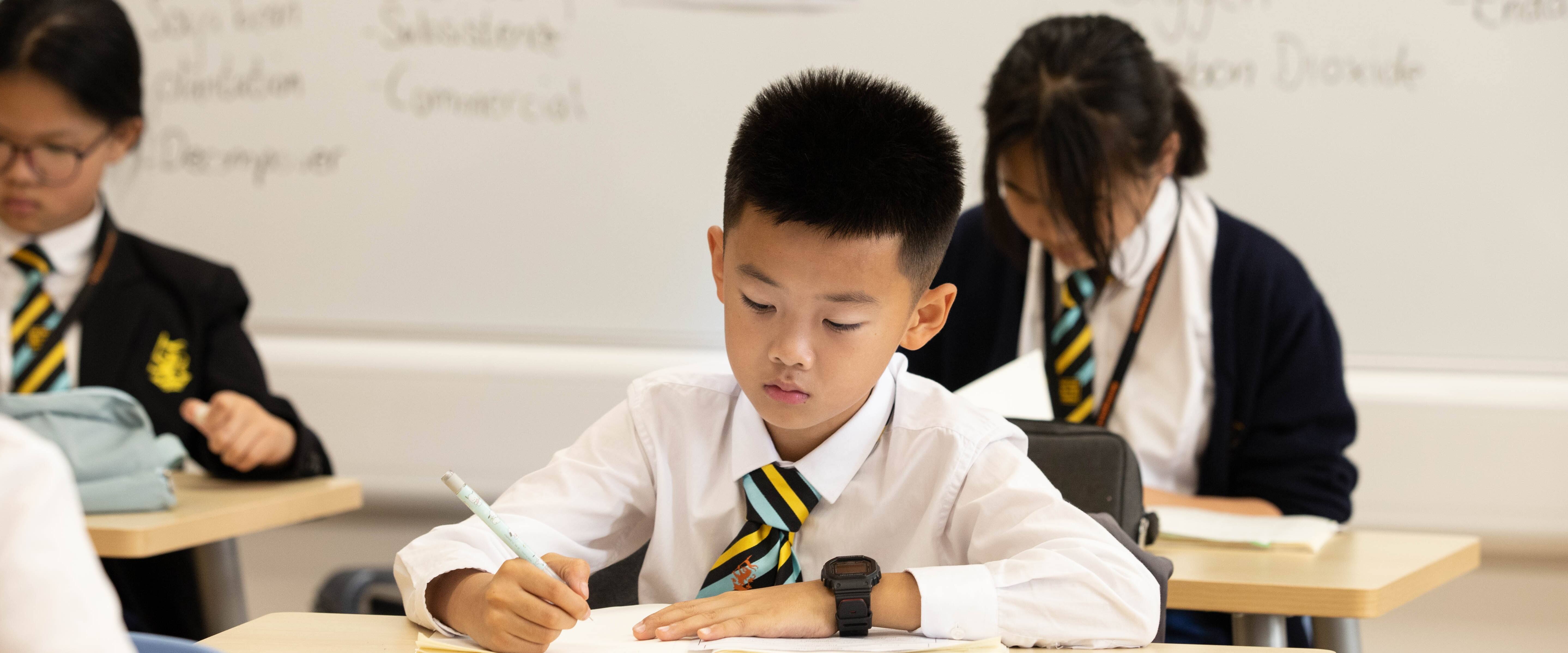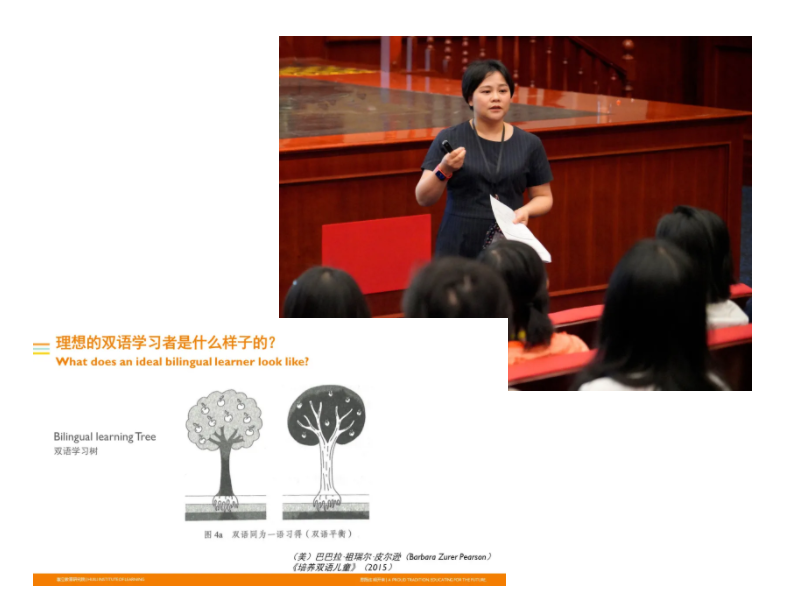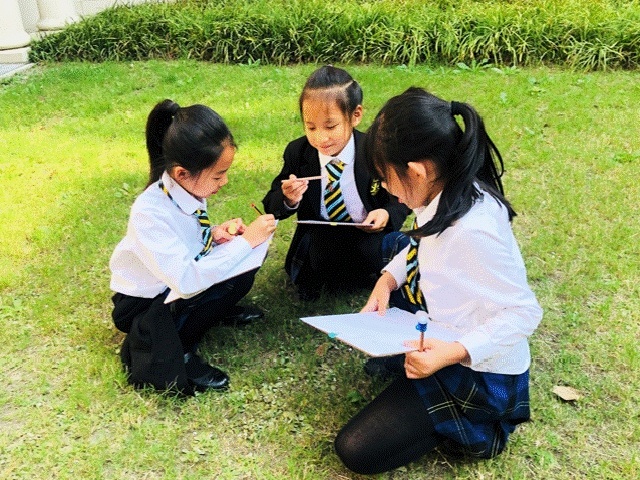

In today’s world, approximately 75% of people in the world are bilingual speakers, and bilingual education has become a widely used education model all over the world. In different contexts, it may have different educational goals and be implemented in different ways. Since the 20th century, bilingual education has always been a key focus in the field of education, and this is also true in China. Over the past 20 years or so, domestic bilingual schools have sprung up like mushrooms. Each school searching for the most effective bilingual teaching model. In this process of exploration, many people put the focus on curriculum construction and developing children’s English proficiency, so that they can better adapt to future international examinations and an international environment. However, the development of children's mother tongue, Chinese, has received less focus. This has attracted the attention of Hiba School.

We are determined to become the best bilingual school so that our children can freely transition and switch between Chinese and English. How should our Chinese class be implemented to help us achieve this vision?
01
First of all, we have done a lot of research investigating the importance of a child’s mother tongue to children. The mother tongue is part of a child’s personal, social and cultural identity. It is this identification we get from speaking our mother tongue that enforces successful social patterns of acting and speaking (Yadav, 2014). Moreover, under the influence of the wave of globalization, people are constantly seeking differences whilst converging. Our diverse social backgrounds make us unique and appealing in society. For our students, the long history and culture of China is embedded in our mother tongue, allowing us to distinguish ourselves from others and become unique individuals. The mother tongue is an indispensable instrument for the development of intellectual, physical and moral aspects of education. Habits, conducts, values, virtues, customs and beliefs are all shaped through the mother tongue. Needless to say, weakness in the mother tongue can create difficulties in the power of expression. For an individual, it can be an immeasurable loss.
02
Many experimental studies have shown that: the age of 2 to adolescence is a critical period for language learning, regardless of mother tongue learning or second language acquisition. The best time to start second language learning must be before the end of puberty (the best age given by relevant research is varied but suggests either before 5 years old / before 7 years old /before 10 years old) in order to become a proficient bilingual/multilingual user. Any kind of learning requires talent and hard work, and so does language learning. But if you miss the critical period of language learning, the gain and loss ratio is completely different. Therefore, we need to grasp this very important language learning period: the primary age, to lay a solid foundation for children's mother tongue learning. This is in order to improve their understanding and expression skills, thinking skills, national and culture awareness, self recognition, and using their mother tongue to promote their second language (i.e. English) learning, therefore making full preparations for their future international curriculum.
The differences between Chinese and English are obvious in terms of the characteristics of the language itself, or the way of thinking and culture carried behind the language. In bilingual schools, children continue to input and output in both Chinese and English. This process will greatly promote their brain development, expand their thinking, their cultural understanding and continuously improve their inclusiveness.

How do we guarantee mother tongue
learning in a bilingual environment?
For our children, mother tongue learning is more about written language learning. Therefore, we need to pay attention to the accumulation of written language materials and the cultivation of language sense in the early stages of mother tongue teaching. The main source of cultivating these abilities is through high-quality listening, speaking and reading activities. We have fully embedded time for mother tongue learning in our curriculum. Children have Chinese lessons every day and library time for reading Chinese books every week, to ensure that they have enough opportunities to learn and use their mother tongue. Our Chinese courses have been carefully organised to ensure that reading is expanded in breadth and depth on the basis of reaching the national syllabus standards and to effectively improve the children's comprehensive language ability. For example, we will choose Chinese reading materials suitable for children according to their age, including texts and excellent literary works such as picture books, poems, fairy tales, folk tales, and fables. We will help children accumulate Chinese materials through reading the entire book, establishing the sense of Chinese language.
Through project-based learning
Language is both a carrier and a tool. Children can fully appreciate the literary beauty of their mother tongue in Chinese class. However, besides Chinese classes, do they have more opportunities to fully apply Chinese? To increase the opportunities for Chinese language applications in a bilingual environment, we need to set up a platform for children to use Chinese on topics they are familiar with, to further consolidate their Chinese. The project-based learning in Grade 1-2 of Hiba School is a very good platform. The project topics come from those that children are interested in, so children will be more willing to explore and express their ideas. The design of the project also takes children's language background into full consideration to ensure that they can stretch themselves to reach their full potential. Children need to express their thoughts and present their works in both Chinese and English. At the same time, the co-teaching model of one Chinese teacher and one expatriate teacher also gives children more opportunities to be exposed to the Chinese environment, helping them to further develop their mother tongue skills.
Family support
For our parents, high-quality parent-child reading is the most effective and direct way to help children build a strong mother tongue foundation. Despite the temptation of electronic products and multimedia, the development of children's reading habits and the improvement of their reading ability are inseparable from the company of their parents. To some extent, in the early stages of children's learning, parents' tendency to language will affect children's language acquisition. Family support can come in various ways, such as reading aloud to your child before going to bed, reading the same book with your child and discussing it together, recording your child’s reading progress and giving appropriate rewards, writing down your child’s feelings after reading or adding illustrations, imagining the stories that may happen before or after the story together, and accompanying your child in role-playing the stories they are reading.In short, continuous interaction and encouragement are the prerequisites for stimulating children's interest in reading.
We are looking forward to seeing that more parents work closely with school to develop children's Chinese reading and usage habits, to improve children's Chinese acquisition and help them become excellent bilingual learners.